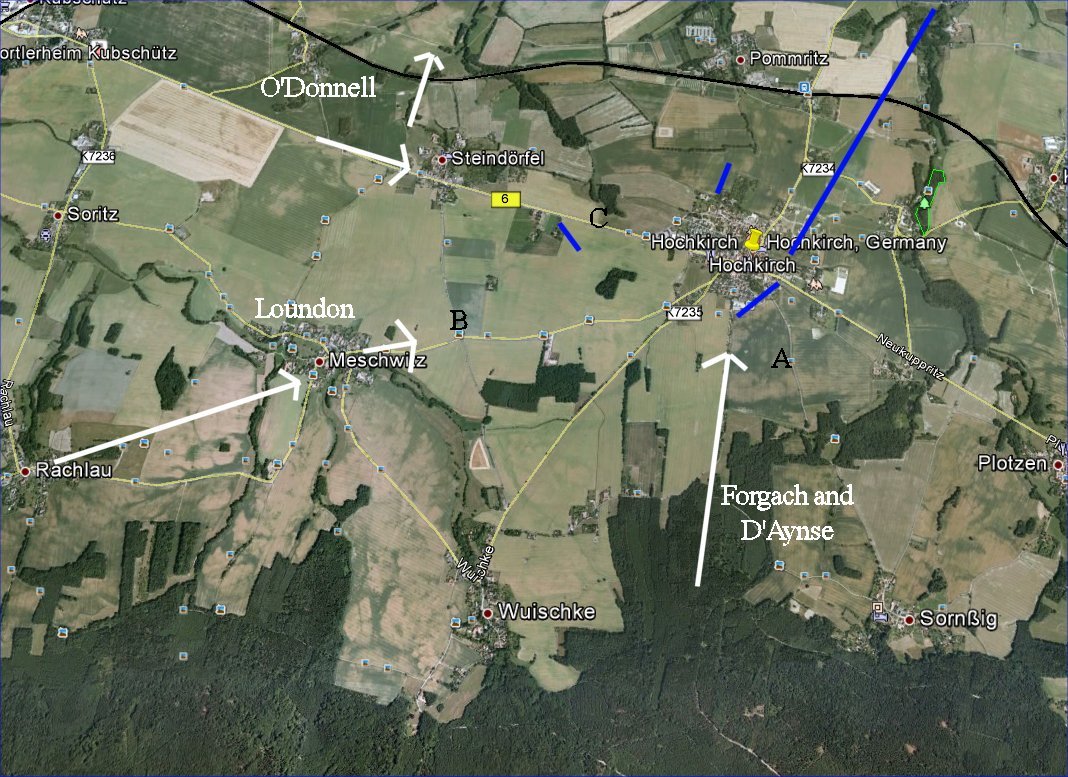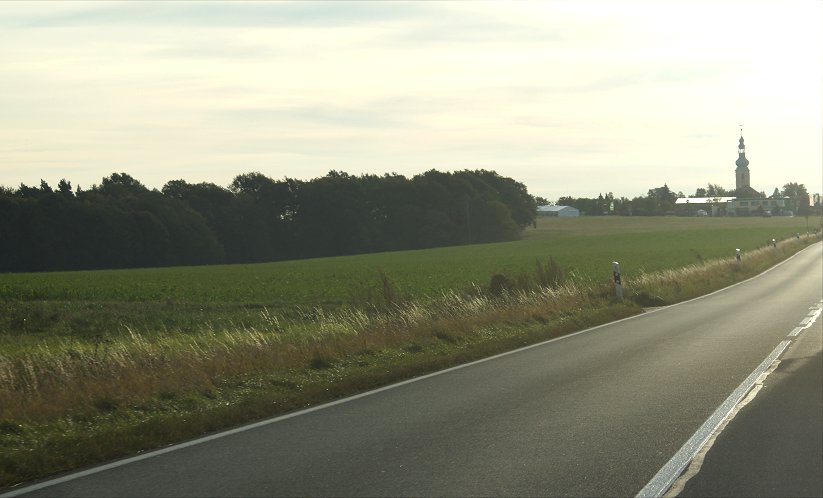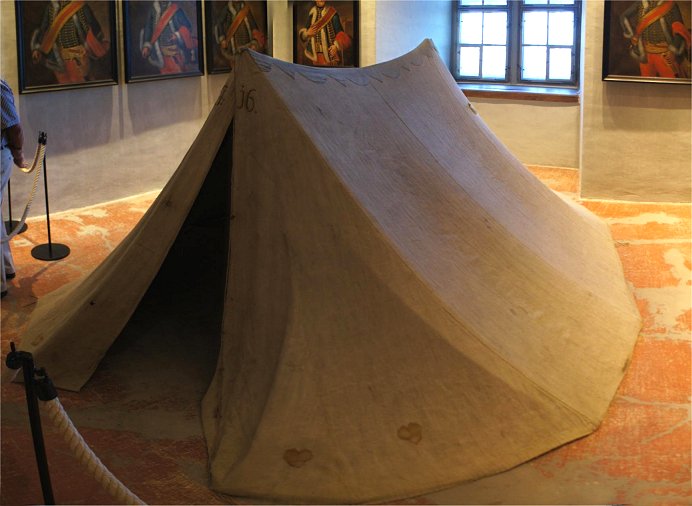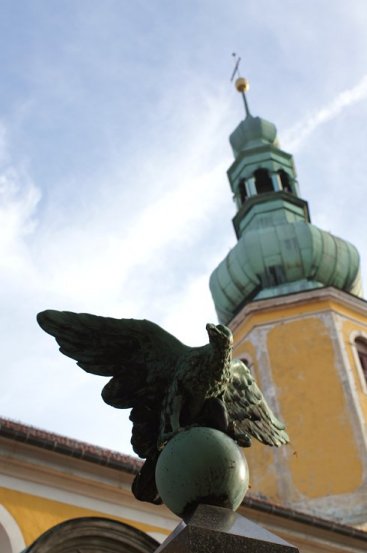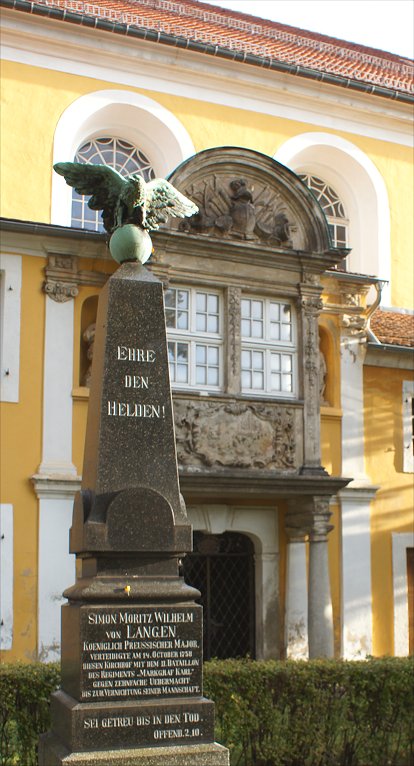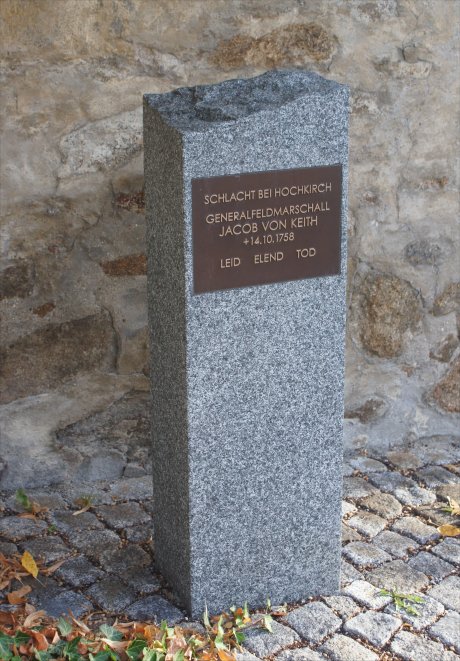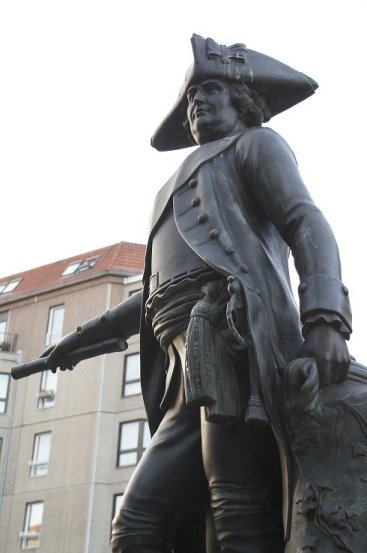Daun's chief of staff Lt. Gen
Franz Moritz Lacy conceived a night
attack on Frederick's camp - against the Prussian front to fix their
attention, but more importantly on the
Prussian right, or southern, flank where considerable damage could be
done. Frederick's right, composed of 11
battalions and 28 squadrons, was at the village of Hochkirch.
Immediately south of the village was a small redoubt with smaller works on either side with
a total of twenty 12
pounders plus six smaller pieces protected by three battalions of
grenadiers. The Prussian artillery overlooked and dominated open
terrain. Out front beyond some woods were two Prussian 'free battalions' -
light infantry - but they were poorly placed to detect the planned
Austrian
attack. Further south was the Wuischke hollow hidden from
Prussian view, beyond which the ground
rose to the Kuppritzer-Berg, a hill occupied by Croats.
Lacy's plan was unique in that it featured several independent columns that converged on the Prussian flank, something that had not been attempted before. In addition, on the advice of Col. Charles Amadei, the independent forces not only approached the Prussian position in column, but attacked in column as well. This type of plan, entirely new in concept, would remain a feature of Austrian operations into the French Revolutionary Wars.
As Frederick was delayed by circumstances, so was Daun. Clearing a route through the woods on the Kuppritzer-Berg took time, delaying the attack from the 12th to the 14th.
Lacy's plan was unique in that it featured several independent columns that converged on the Prussian flank, something that had not been attempted before. In addition, on the advice of Col. Charles Amadei, the independent forces not only approached the Prussian position in column, but attacked in column as well. This type of plan, entirely new in concept, would remain a feature of Austrian operations into the French Revolutionary Wars.
As Frederick was delayed by circumstances, so was Daun. Clearing a route through the woods on the Kuppritzer-Berg took time, delaying the attack from the 12th to the 14th.
